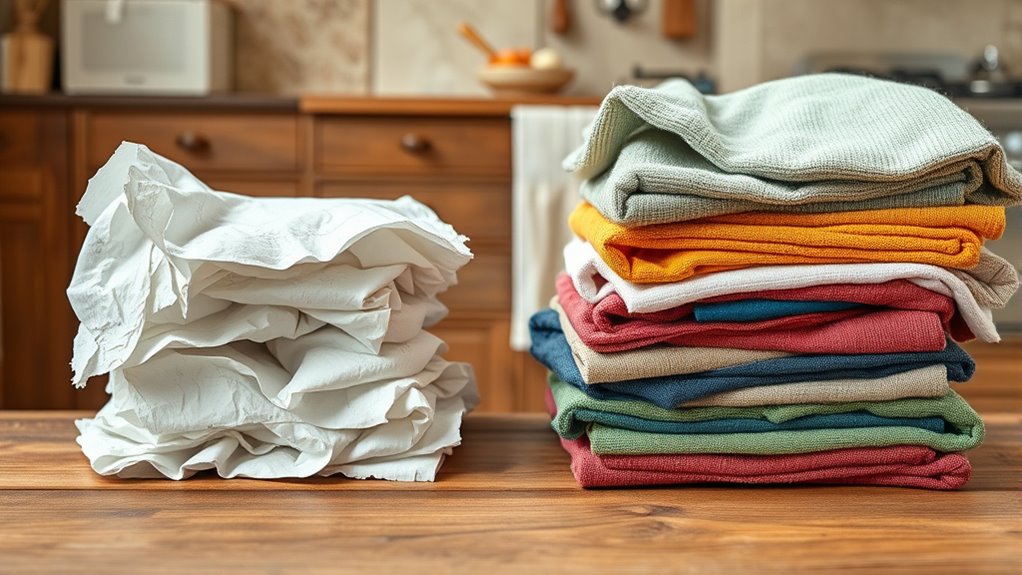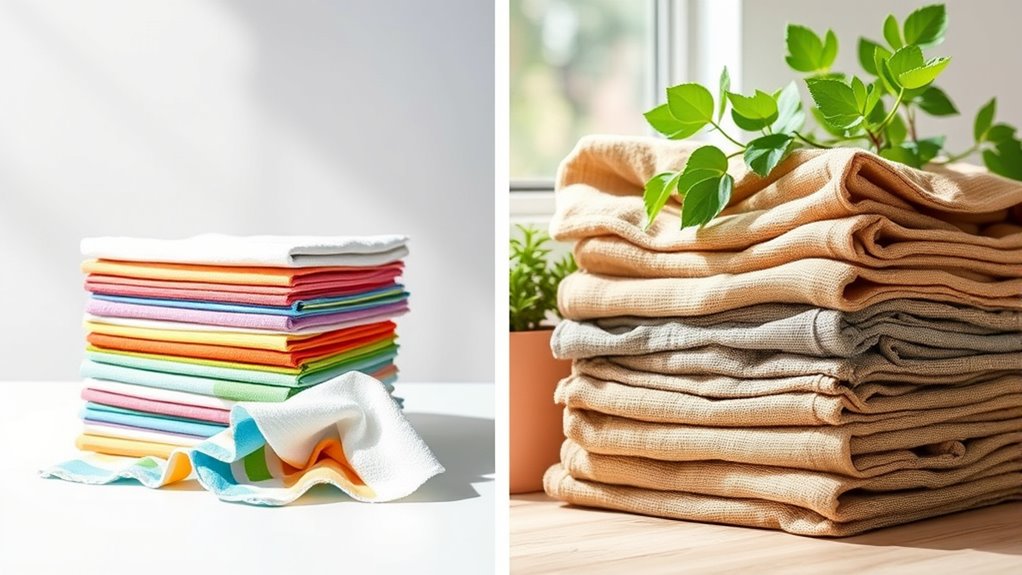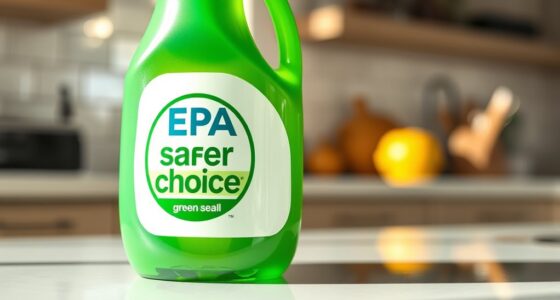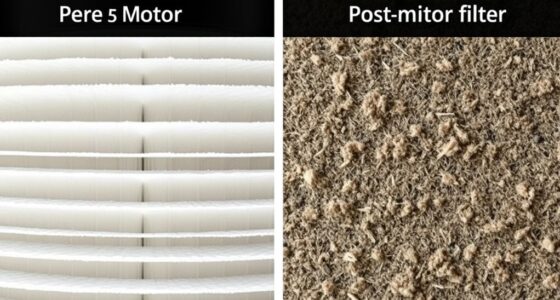Choosing cloth rags over paper towels is better for the environment because they’re reusable, reducing waste and landfill contributions. Cloth rags made from natural fibers need fewer resources and decompose faster, while paper towels consume more resources and take longer to break down. Using cloth rags also cuts down on single-use waste and resource consumption. To learn how this shift can make a real difference, discover the environmental benefits in detail below.
Key Takeaways
- Cloth rags are reusable, reducing waste and landfill contribution compared to single-use paper towels.
- Paper towels decompose slowly and require resources for production, increasing environmental impact.
- Reusing cloth rags minimizes resource consumption and supports sustainable household practices.
- Paper towels involve ongoing resource use due to their disposable nature, contributing to higher environmental footprints.
- Choosing cloth rags promotes eco-friendly habits, lowering waste, resource use, and overall environmental impact.

When it comes to cleaning up spills and messes, choosing between paper towels and cloth rags can make a big difference in your household. One key factor to evaluate is their environmental impact, especially regarding biodegradability and reuse potential. Paper towels are typically made from processed paper, which may contain chemicals and dyes, making them less biodegradable than natural fibers. When you throw them away after use, they often end up in landfills where they decompose slowly, sometimes taking months or even years. This slow breakdown contributes to environmental waste and pollution, especially if you’re using them frequently. On the other hand, cloth rags, usually made from natural fabrics like cotton or linen, are inherently biodegradable. When you’re done with a cloth rag, you can wash and reuse it multiple times, reducing waste considerably. This reuse potential means that, over time, cloth rags generate far less landfill waste compared to single-use paper towels.
By opting for cloth rags, you’re actively extending their lifespan through reuse, which helps minimize your household’s environmental footprint. The more you reuse cloth rags, the less you rely on disposables, and that means fewer resources are consumed in producing new paper towels. Additionally, because cloth rags can be washed and reused dozens of times, they offer a sustainable alternative that aligns with eco-friendly practices. Conversely, while some paper towels boast features like being made from recycled paper, they still generally lack the same reuse potential as cloth rags. Once used, they’re typically discarded, contributing to ongoing waste. Even biodegradable paper towels, although better in terms of decomposing naturally, still require resources for production and transportation, adding to their overall environmental impact.
Moreover, innovations in sustainable materials are increasingly making cloth rags a more attractive option for eco-conscious consumers. In essence, if you’re focused on reducing waste and supporting biodegradability, cloth rags are the smarter choice. They help you cut down on landfill contributions and make the most of the resources used in their production through multiple uses. While paper towels may be more convenient for quick cleanups, their single-use nature means they’re less sustainable over the long term. Choosing cloth rags encourages a more conscious approach to household cleaning, emphasizing reuse and natural decomposition. This simple switch can considerably lessen your environmental impact, making your cleaning routine more eco-friendly and sustainable.
Frequently Asked Questions
How Do Paper Towels Compare in Biodegradability?
Paper towels are generally biodegradable, offering some biodegradability benefits, but they take longer to break down compared to cloth rags. When disposed of properly, they can decompose naturally, making them a more eco-friendly option for disposal than non-biodegradable alternatives. However, their rapid use and single-use nature mean you should consider eco-friendly disposal methods, like composting, to maximize their biodegradability benefits and minimize environmental impact.
What Is the Energy Consumption Difference Between Manufacturing Both Options?
Imagine the energy needed to power a small city; that’s roughly the manufacturing energy difference between paper towels and cloth rags. Cloth rags generally consume less energy because they’re reusable, reducing resource consumption over time. Paper towels, on the other hand, require more manufacturing energy due to their single-use nature and the extensive processes involved. By choosing cloth, you cut down on resource consumption and energy use, making a more sustainable choice.
Are There Health Risks Associated With Reusing Cloth Rags?
Reusing cloth rags can pose some health risks if you don’t wash them properly. You might face infection risks from bacteria or mold if they’re not cleaned thoroughly after use. Additionally, chemical exposure from cleaning agents or residues on the rags can be a concern. To stay safe, wash your cloth rags regularly in hot water, and avoid using harsh chemicals that could leave harmful residues.
How Does Disposal Impact the Environment for Each?
When you dispose of paper towels and cloth rags, consider their environmental impact. Paper towels often end up in landfills, where they decompose slowly, releasing non-biodegradable materials that add to waste. Cloth rags, especially if made from biodegradable materials, can be washed and reused, reducing waste. Proper waste management strategies help minimize their environmental footprint, so choose reusable cloth rags when possible to lessen landfill contribution and promote sustainability.
Can Cloth Rags Reduce Overall Household Waste?
Using cloth rags can considerably reduce your household waste. Did you know that a single cloth rag can replace thousands of paper towels over its lifetime? Thanks to their material durability, cloth rags last longer and can be reused many times, boosting their recycling potential. By switching, you cut down on waste and minimize environmental impact, making your household more eco-friendly and sustainable.
Conclusion
Ultimately, choosing between paper towels and cloth rags depends on your habits and values. While paper towels are convenient, they generate more waste and harm the environment. Cloth rags, though requiring washing, are reusable and eco-friendly. Remember, “A little effort goes a long way.” Making small changes in your daily routine can have a big impact on the planet, so choose wisely and keep sustainability in mind.








